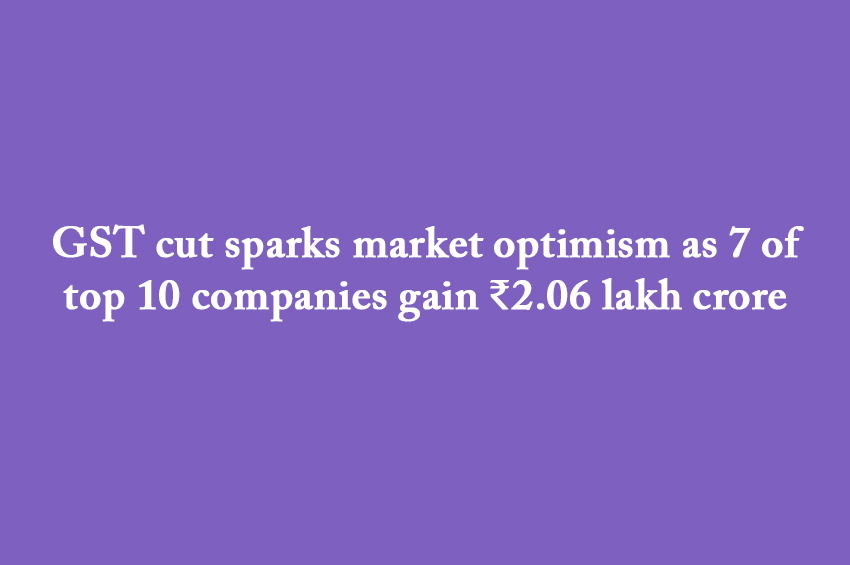Winning Bizness Desk
Mumbai The government’s announcement of a Goods and Services Tax (GST) rate cut boosted investor sentiment this week. As a result, seven of the country’s top ten companies by market valuation added a combined ₹2.06 lakh crore. Bajaj Finance and Reliance Industries emerged as the biggest gainers, adding ₹37,961 crore and ₹23,344 crore respectively.
Apart from these two, HDFC Bank, State Bank of India and Life Insurance Corporation of India also saw significant buying activity during the week.
Losses for three major companies
Not all large companies benefited. Shares of Tata Consultancy Services (TCS), Infosys and Hindustan Unilever came under selling pressure. Together, the market value of these three companies fell by ₹29,731 crore. TCS alone lost ₹13,007 crore in market capitalization, the highest decline among them.
Volatility in Sensex and Nifty
On Friday, September 5, the last trading day of the week, markets witnessed sharp swings of more than 750 points. The Sensex eventually closed 7 points lower at 80,711, while the Nifty ended 7 points higher at 24,741.
Among the 30 Sensex stocks, 14 closed higher and 16 declined. Mahindra, Maruti and Reliance shares rose up to 2 percent, while ITC, HCL Tech and TCS were among seven stocks that fell up to 2 percent. On the Nifty, 28 stocks gained while 22 slipped. NSE indices of auto, media and metal gained, while IT, FMCG and realty declined up to 1.4 percent.
What is market capitalization
Market capitalization is the total market value of a company’s outstanding shares, meaning all shares currently held by shareholders. It is calculated by multiplying the total number of shares issued by the market price of a single share.
For example, if company A has 1 crore shares traded in the market and each is worth ₹20, its market capitalization will be 1 crore multiplied by 20, equaling ₹20 crore.
Why market value rises or falls
The rise or fall in market capitalization is driven by several factors. A company’s market value grows when share prices rise, financial results are strong, or when positive news and investor sentiment dominate. It may also rise if shares are issued at a high price. On the other hand, market capitalization falls when share prices decline, financial results are weak, negative news dominates, or when the economy slows. It may also shrink if a company buys back shares or delists.
Impact on companies
For companies, higher market capitalization improves the ability to raise funds, secure loans, and acquire other firms. A smaller or shrinking market cap makes it difficult for companies to make strong financial decisions and limits their expansion capacity.
Impact on investors
For investors, rising market capitalization translates into direct gains, as the value of their shares increases. Falling market capitalization results in losses, often prompting investors to sell their holdings.
For instance, if TCS’s market capitalization of ₹12.43 lakh crore grows further, investor wealth will rise, and the company will have greater access to capital for future projects. However, if it declines, both the company and investors face losses.
Summary in 7 pointers
- GST rate cut boosted market sentiment and led to gains in several large companies.
- Seven of the top 10 firms added ₹2.06 lakh crore in market value.
- Bajaj Finance gained ₹37,961 crore, Reliance Industries gained ₹23,344 crore.
- TCS, Infosys and Hindustan Unilever together lost ₹29,731 crore in valuation.
- Sensex swung 750 points on September 5, closing at 80,711, while Nifty ended at 24,741.
- Market capitalization reflects the total value of all outstanding company shares, rising or falling with share price trends.
- High market cap strengthens a company’s financial capacity, while investors directly benefit from its rise or lose when it falls.


